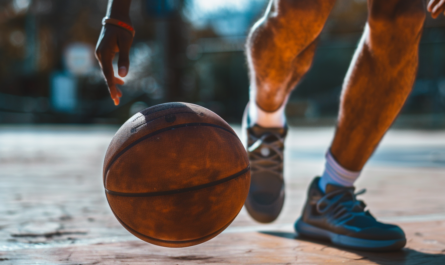In today’s fast-paced digital world, the accuracy of information in basketball news has never been more critical. The abundance of news portals and social media platforms means that both true and false information can spread rapidly, influencing public perception. Distinguishing between truthful news and fake news in sports journalism is essential for maintaining the integrity of the sport and ensuring that fans and professionals alike are well-informed.
What are Fake News in the Context of Basketball?
Fake news in basketball refers to false or misleading information presented as legitimate news. These fake reports can take many forms, including fabricated stories, exaggerated claims, or misrepresented facts. The primary characteristics of fake news include sensationalism, lack of credible sources, and a tendency to evoke strong emotional reactions.
Fake news can significantly impact public opinion about sports events and personalities. For instance, a false report about a player’s misconduct or an exaggerated claim about a team’s performance can shape how fans and the general public perceive them. This misinformation can lead to unwarranted criticism, misplaced praise, or even influence betting behaviors and team support.
The spread of fake news is facilitated by the speed and reach of digital media. Social media platforms, in particular, play a significant role in disseminating false information quickly. When a sensational story breaks, it is often shared widely before its accuracy can be verified, embedding itself in public consciousness regardless of its truthfulness.
Understanding the nature and impact of fake news is the first step in combating it. By recognizing the common traits of fake news, such as sensational headlines, anonymous sources, and lack of verifiable details, readers can become more critical of the information they consume and share.
Examples of Common Myths and Rumors in Basketball
The world of basketball has seen numerous myths and rumors that have later been debunked. One notable example is the persistent rumors about player trades that never materialize. These rumors often start from speculative reports and gain traction through repeated sharing, creating false expectations among fans and even affecting the players involved.
Another common form of fake news in basketball involves exaggerated claims about players’ personal lives. Stories about off-court behavior, financial troubles, or interpersonal conflicts can spread rapidly, even when they are baseless. Such rumors can tarnish a player’s reputation and create unnecessary distractions.
Several factors contribute to the spread of these myths and rumors. One major factor is the desire for sensational content that attracts clicks and views. News portals and social media accounts may prioritize engaging stories over accurate reporting to drive traffic. Additionally, confirmation bias plays a role, as readers are more likely to believe and share information that aligns with their existing beliefs and preferences.
To combat these myths and rumors, it is crucial for readers to develop a critical approach to the information they encounter. By being aware of the common sources and motivations behind fake news, fans can better navigate the media landscape and make informed decisions about what to believe.
Strategies for Verifying the Authenticity of News
To distinguish between truth and lies in basketball news, readers can employ several verification strategies. One effective method is to cross-check information with multiple reputable sources. If a story is true, it will likely be reported by several established news outlets with a history of accurate reporting.
- Readers should also look for transparent sourcing in news articles. Credible reports often cite specific sources, such as named individuals, official statements, or verified documents. In contrast, fake news articles may rely on vague or anonymous sources, making it difficult to verify the information.
- Another useful strategy is to check the publication date and context of the news. Sometimes, old news stories resurface and are presented as current events, leading to misinformation. Additionally, understanding the context in which a story is reported can provide clues about its accuracy. Sensational headlines and stories that seem too extraordinary to be true should be approached with skepticism.
- Reliable sources of basketball information include official team websites, established sports news outlets like ESPN and Sports Illustrated, and verified social media accounts of players and teams. These sources have a vested interest in maintaining credibility and are less likely to disseminate false information.
The Impact of Fake News on the Basketball Community
Fake news can have a profound impact on the basketball community, affecting how events and players are perceived. For example, a false report about a player’s injury can cause unnecessary panic among fans and disrupt the team’s strategy. Similarly, unfounded rumors about a coach’s dismissal can create instability within the team.
The consequences of spreading false information extend beyond immediate perceptions. Repeated exposure to fake news can erode trust in legitimate news sources, leading to a more skeptical and less informed public. This mistrust can make it harder for true and important stories to gain the attention they deserve, ultimately harming the integrity of sports journalism.
For the sports industry, the proliferation of fake news poses significant challenges. Misinformation can affect sponsorship deals, player morale, and fan engagement. Sponsors may be hesitant to associate with players or teams embroiled in controversy, whether real or fabricated. Players subjected to false rumors may experience stress and distraction, impacting their performance.
To mitigate the impact of fake news, the basketball community must prioritize media literacy. Educating fans, players, and professionals about the importance of verifying information and the tactics used by purveyors of fake news can help create a more informed and resilient community. Promoting critical thinking and responsible sharing of information can also play a crucial role in maintaining the health of the sport’s media landscape.
Finally, we recommend reading our article, where we talked about the role of news portals.
FAQ
Fake news in basketball refers to false or misleading information presented as legitimate news. It includes fabricated stories, exaggerated claims, or misrepresented facts, often lacking credible sources.
Fake news can shape public opinion about players and teams by spreading misinformation that may lead to unwarranted criticism or praise. It can also influence betting behaviors and team support based on inaccurate reports.
Digital media, particularly social platforms, accelerates the spread of fake news in basketball by allowing sensational stories to reach a wide audience quickly. This rapid dissemination often occurs before the accuracy of the information can be verified.




